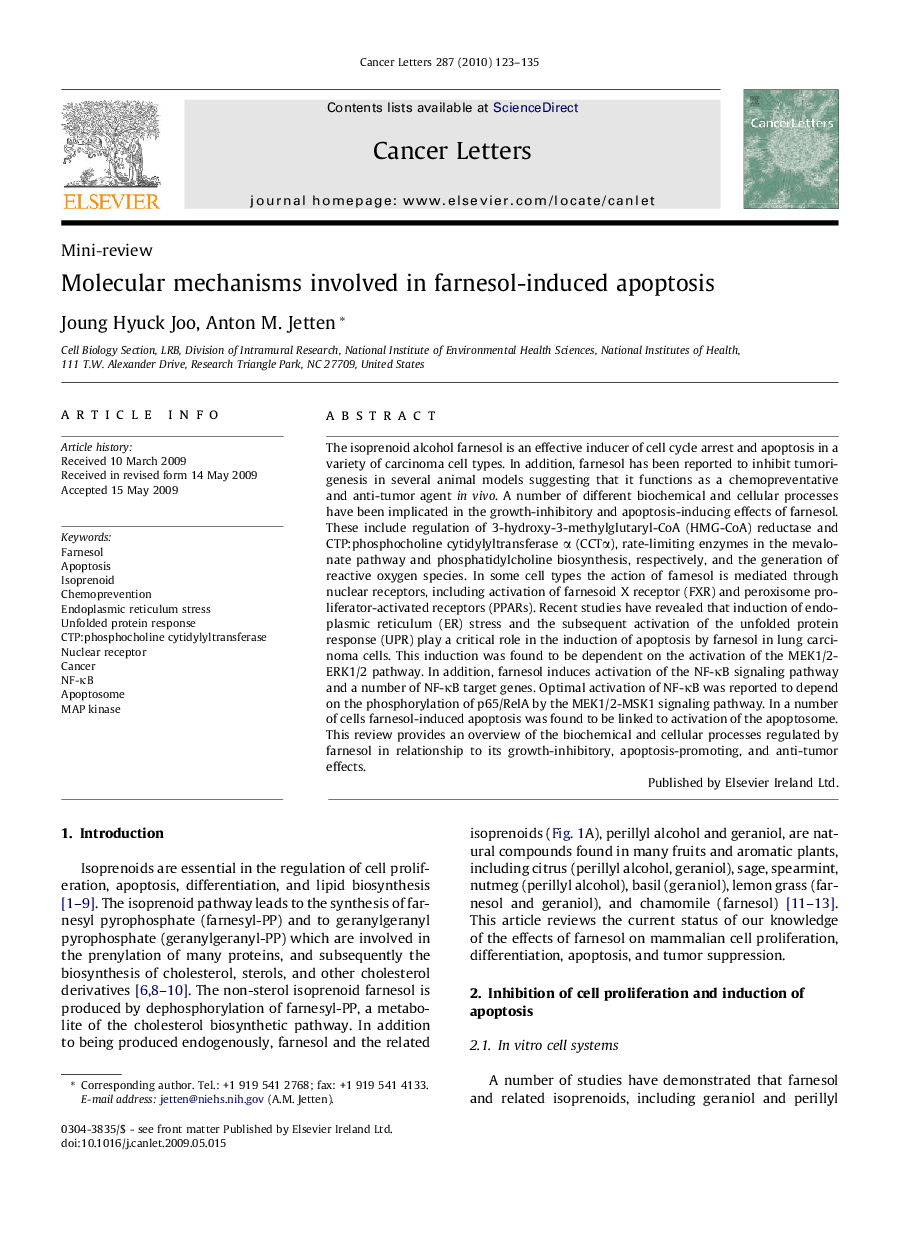| کد مقاله | کد نشریه | سال انتشار | مقاله انگلیسی | نسخه تمام متن |
|---|---|---|---|---|
| 2116499 | 1084954 | 2010 | 13 صفحه PDF | دانلود رایگان |

The isoprenoid alcohol farnesol is an effective inducer of cell cycle arrest and apoptosis in a variety of carcinoma cell types. In addition, farnesol has been reported to inhibit tumorigenesis in several animal models suggesting that it functions as a chemopreventative and anti-tumor agent in vivo. A number of different biochemical and cellular processes have been implicated in the growth-inhibitory and apoptosis-inducing effects of farnesol. These include regulation of 3-hydroxy-3-methylglutaryl-CoA (HMG-CoA) reductase and CTP:phosphocholine cytidylyltransferase α (CCTα), rate-limiting enzymes in the mevalonate pathway and phosphatidylcholine biosynthesis, respectively, and the generation of reactive oxygen species. In some cell types the action of farnesol is mediated through nuclear receptors, including activation of farnesoid X receptor (FXR) and peroxisome proliferator-activated receptors (PPARs). Recent studies have revealed that induction of endoplasmic reticulum (ER) stress and the subsequent activation of the unfolded protein response (UPR) play a critical role in the induction of apoptosis by farnesol in lung carcinoma cells. This induction was found to be dependent on the activation of the MEK1/2-ERK1/2 pathway. In addition, farnesol induces activation of the NF-κB signaling pathway and a number of NF-κB target genes. Optimal activation of NF-κB was reported to depend on the phosphorylation of p65/RelA by the MEK1/2-MSK1 signaling pathway. In a number of cells farnesol-induced apoptosis was found to be linked to activation of the apoptosome. This review provides an overview of the biochemical and cellular processes regulated by farnesol in relationship to its growth-inhibitory, apoptosis-promoting, and anti-tumor effects.
Journal: Cancer Letters - Volume 287, Issue 2, 28 January 2010, Pages 123–135